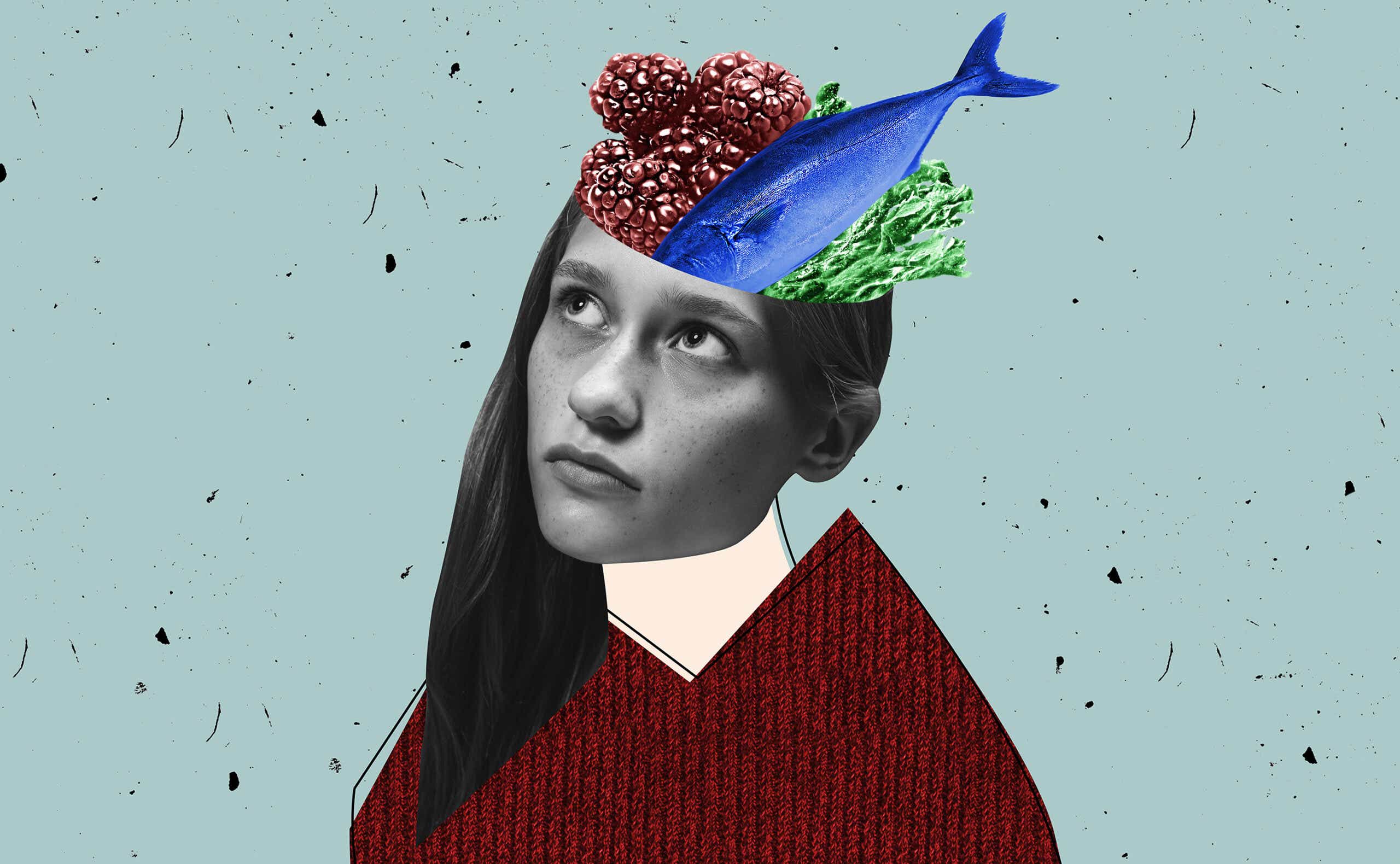According to the World Health Organization, about 280 million people in the world have depression — which means that many of us are struggling with a mood disorder that causes feelings like persistent sadness and loss of interest. And on top of those unpleasant emotions, this shockingly common illness can impact your relationship with food. If you’ve ever sought out comfort in a pint of ice cream or craved your favorite dish of your mom’s home cooking after a particularly trying day, you know what we’re talking about. However, emotional pain and disappointment can also completely curb your appetite, causing you to refrain from eating. Either of these behaviors can have long-lasting effects.
Drastic undereating or a suddenly high intake of processed comfort food contributes to poor mental health. On the bright side, research has linked a higher intake of nutrient-dense foods to higher levels of well-being and happiness, which means you don’t have to swear off comfort food when you’re in a bad mood — you might just need to tweak which comfort foods you turn to. Assessing your diet is an important aspect of treating depression and boosting happiness.
To get the fundamentals of nutritious foods that can help your battle against depression, we spoke to Stacie Stephenson, certified nutrition specialist, author, and founder and CEO of health and wellness media venture, VibrantDoc. Stephenson, who’s a board member of the American Nutritional Association, understands that the hardest time to make a major dietary change might be when you’re emotionally unmotivated. “I wouldn’t expect someone who is depressed to be able to manage a drastic dietary change. Instead, small changes that feel easy are essential.” And if you integrate some of these foods into your diet now, they’ll work their magic to help ward off depression and you’ll know what to reach for when you find yourself in a slump.
The best foods to fight depression
Stephenson advises starting by upping your intake of anti-inflammatory foods because “inflammation is linked to mood disorders including depression.” Plus, research shows that anti-inflammatory foods are associated with lower rates of depression.
Berries: A daily serving of berries has been shown to reduce inflammation. Luckily, they’re easy to mix into other dishes but they also work great as a snack on their own. Want some extra credit? Mix them in a cup of yogurt.
Yogurt: A 2023 study suggests fermented dairy products — like yogurt — may help soothe depression because of emerging evidence that poor gut health can worsen mental health issues and stress. And yogurt is full of probiotics that strengthen your digestive tract, so a spoon full of the stuff now might do your future mood some good.
Fatty fish: Fatty fish is full of omega-3 fatty acids, and research shows that these acids reduce depression rates. Stephenson says that salmon, mackerel, and sardines are accessible choices you can pick up at any local market.
Leafy greens: Research shows that consumption of greens is linked to lower depression rates — which is an excellent reason to up your intake of roughage like kale, spinach, Swiss chard, and bok choy.
More fruits and vegetables: Stephenson points to research that shows diets high in fruit and vegetables are associated with low depression levels. So even microwaving some frozen green beans or grabbing a banana can add up.
Food that can cause depression
While certain foods have the power to boost your mental health, other meals can tank your mood. Considering the suggested link between inflammatory foods and worsened mental health, Stephenson specifically recommends reducing the inflammatory foods listed below.
Trans fats: Research has linked higher intakes of trans fats to a greater risk of depression. You can commonly find trans fats in foods like frozen pizza, fried foods (like French fries or donuts), margarine, and microwave popcorn.
Refined sugar: These are processed sweeteners derived from plant sources. Corn syrup and white sugar are classic examples of refined sweeteners you might stir into your coffee or use to bake cookies. Research has linked higher refined sweetener intake to a higher prevalence of depression.
Refined grains: These are grains that have been processed to achieve a finer texture or lengthen shelf life. White flour or white rice are refined grains you may eat regularly. At least one study found that a higher intake of refined grains led to increased odds of depression.
At the end of the day, do what you can
Stephenson admits that “the last thing many people want to do or feel they can do when they’re depressed is cook a meal from scratch with whole foods.”
If you find yourself crying into your saucepan, she advises taking shortcuts: “Stock up on ingredients that are easy to use or more healthful processed foods that don’t require much, if any, prep.” Try spending a little extra on pre-cut fruit or buying canned and frozen vegetables that you can easily pop in the microwave.
Not in the mood to go near the kitchen? It’s becoming easier to make little changes even if you’re the type of cook who can burn a pot of water. When you open Uber Eats or Doordash, rethink your order. Stephenson says, “The options now go far beyond pizza delivery. You can get soup, big salads, sandwiches on whole grain bread, fruit, and yogurt parfaits.”
If you’re not ready to part with comfort foods, Stephenson recommends making gradually healthier choices. If you have two options available, opt for the more wholesome meal: “If it’s between cheese and crackers and a greasy pepperoni pizza, the former is the better option” because you’ll be eating comparatively fewer trans fats and refined grains. As you make these little changes, bigger adjustments will eventually become easier.
If you don't always adhere to this advice, Stevenson promises that it’s OK: “Depression is a serious condition. Be kind and gentle with yourself as you explore what you need.”









